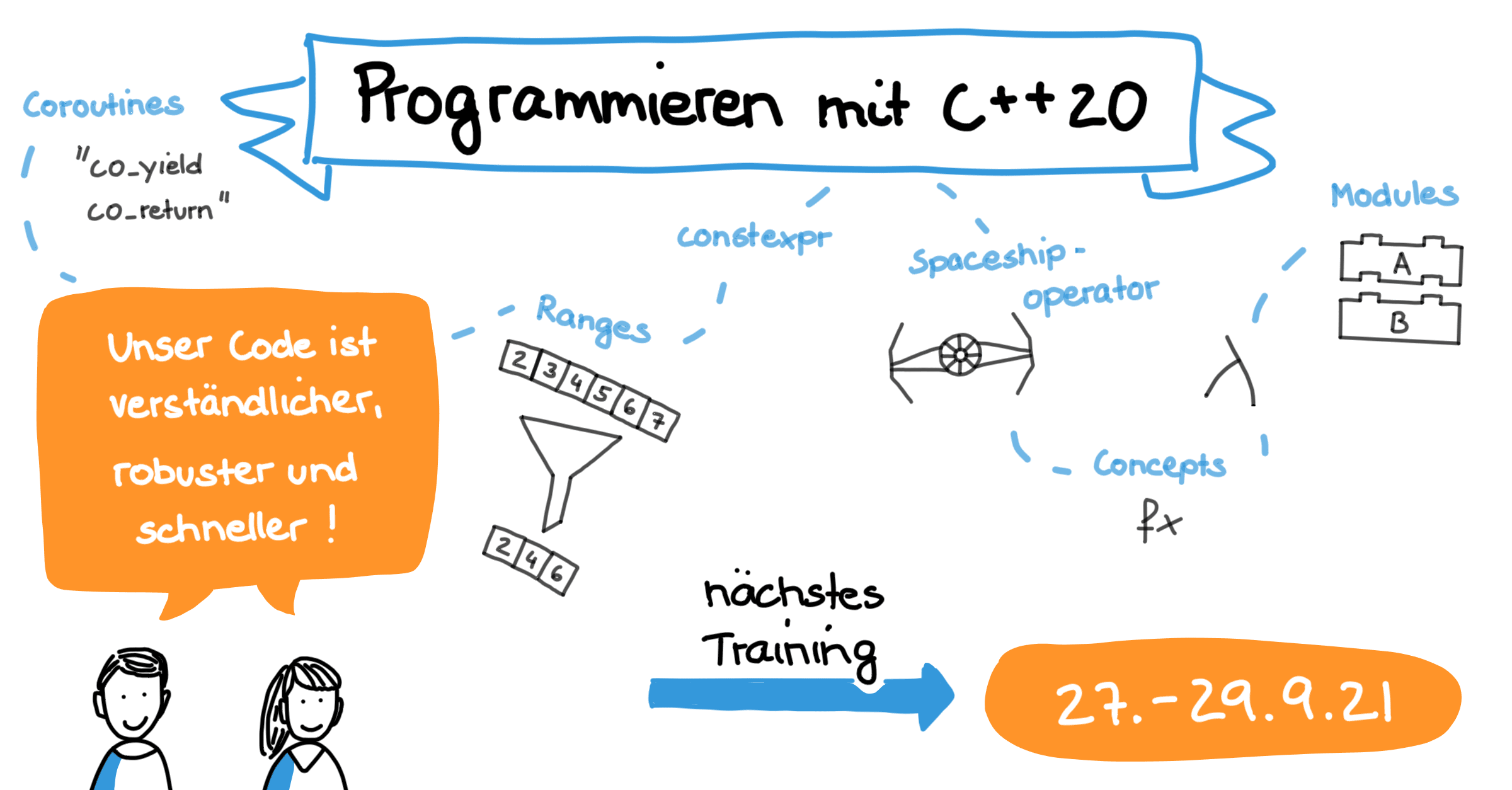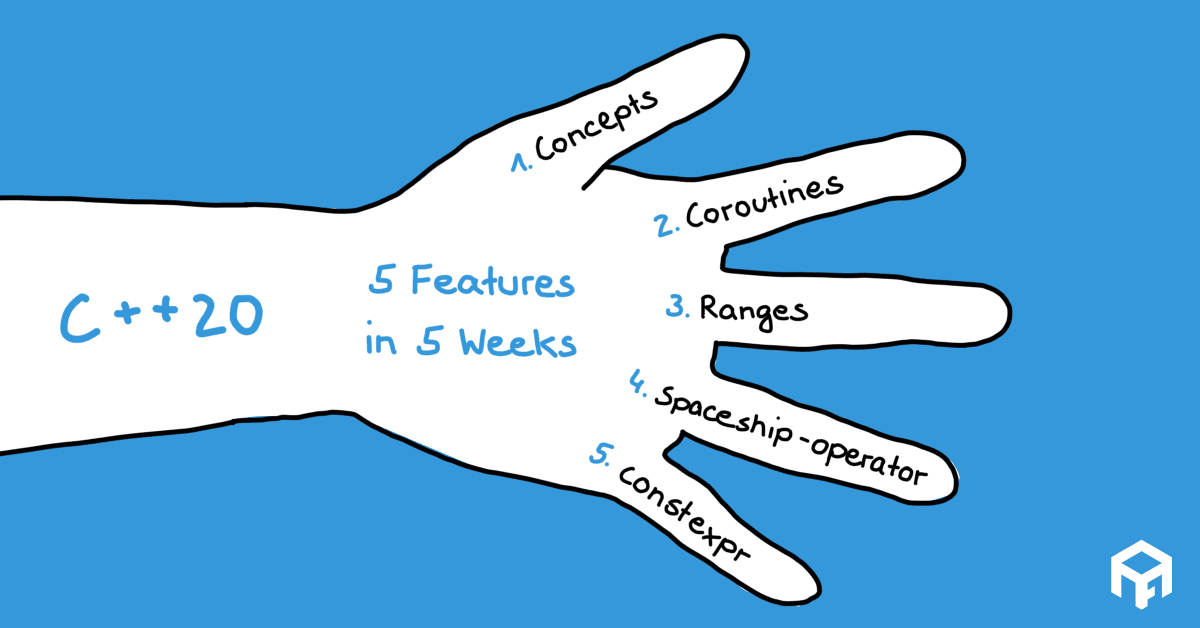C++
C++20: A neat trick with consteval
Among the various improvements of C++20 are changes to constexpr, namely a new keyword consteval. In this post, I like to dig into consteval a bit and see what we can do with this [...]
C++
3-tages Schulung: Programmieren mit C++20
Du hast Interesse an C++20, weil Du ... [...]
C++
Programming with C++20 book quiz - The winners
Thank you to everyone who participated in the C++20 book quiz! I was amazed by the number of answers and the answers you all provided. [...]
C++
C++20 ranges benefits: avoid dangling pointers
In my last monthly post, C++20 benefits: consistency with ranges, we looked at what ranges do for us when it comes to consistency and how we can get the same level of consistency [...]
C++
Programming with C++20 book quiz
Today I like to announce a C++20 book quiz. [...]
C++
C++20 benefits: consistency with ranges
You all probably already have heard of C++20's ranges. With ranges-v3, Eric Niebler provided us with a solution already, independent of C++20. In this post, I like to shed some [...]
C++
Can I touch a moved-from object
In this blog post, I try to bring you a topic closer that was already discussed and written about multiple times: move semantics. Just to give you two references: [...]
C++
C++20: Five Features in Five Weeks
You may have noticed that I offer a new class, C++20: Five Features in Five Weeks. Today I like to tell you a bit about the background of this class. [...]
C++
Something you should know about structured bindings
Today's post is partially about C++ Insights and a lesson learned. Last week Dawid Pilarski opened issue #381 for C++ Insights. [...]
C++
Clang and gcc on macOS Catalina - Finding the include paths
macOS 10.15 alias Catalina is out since the end of 2019, but I usually wait a while before I upgrade. Last week I took this step and did it, assuming most issues are either solved [...]



